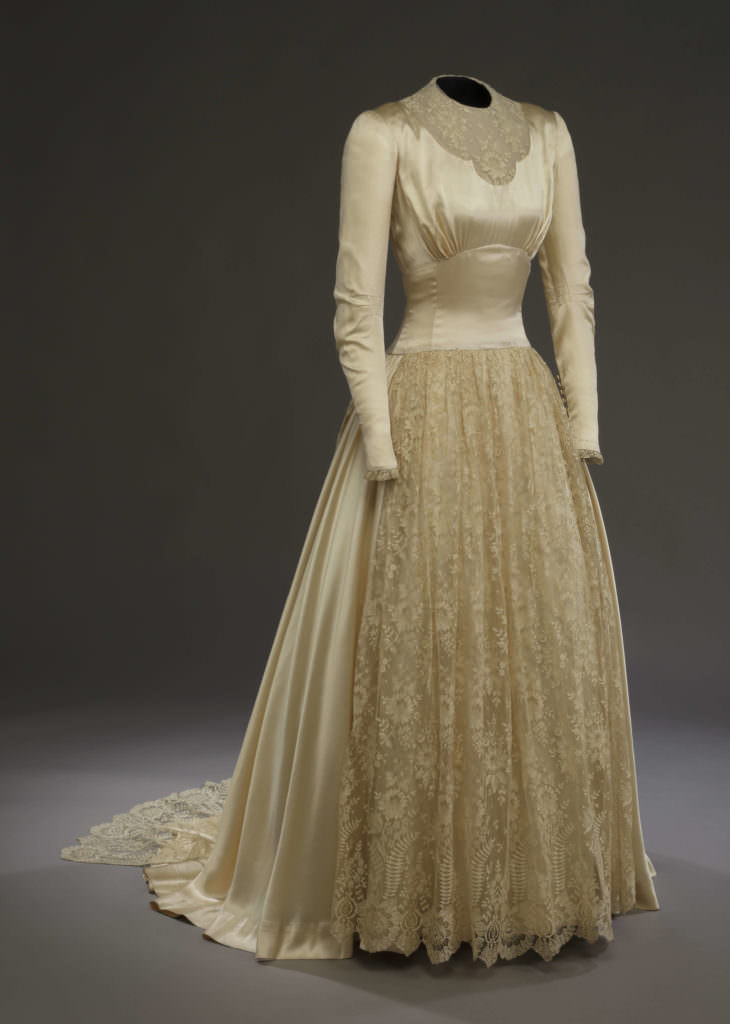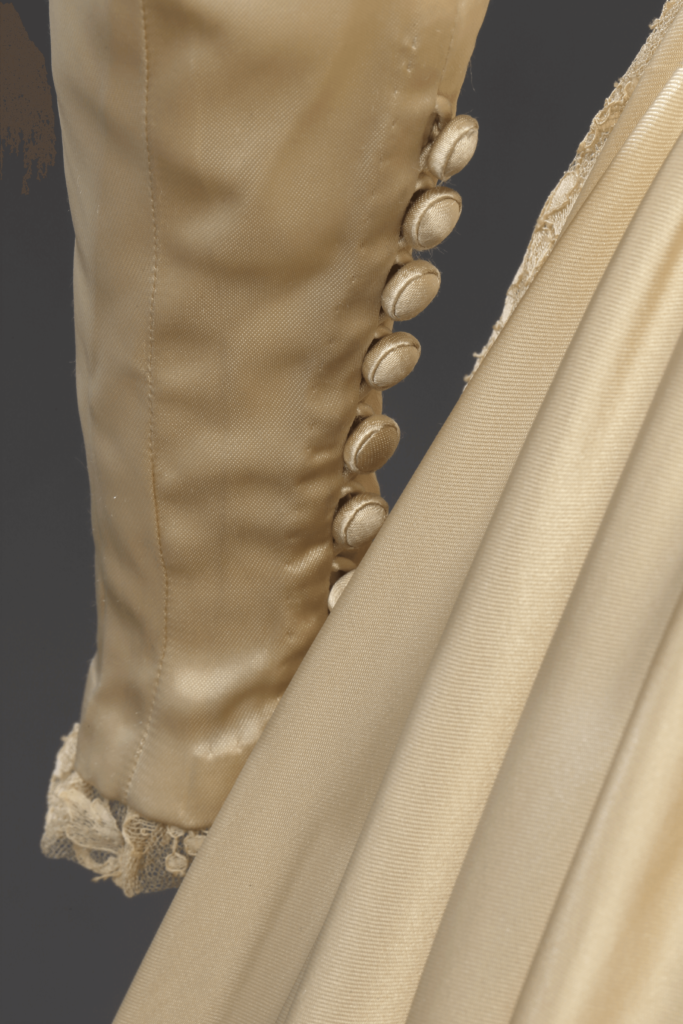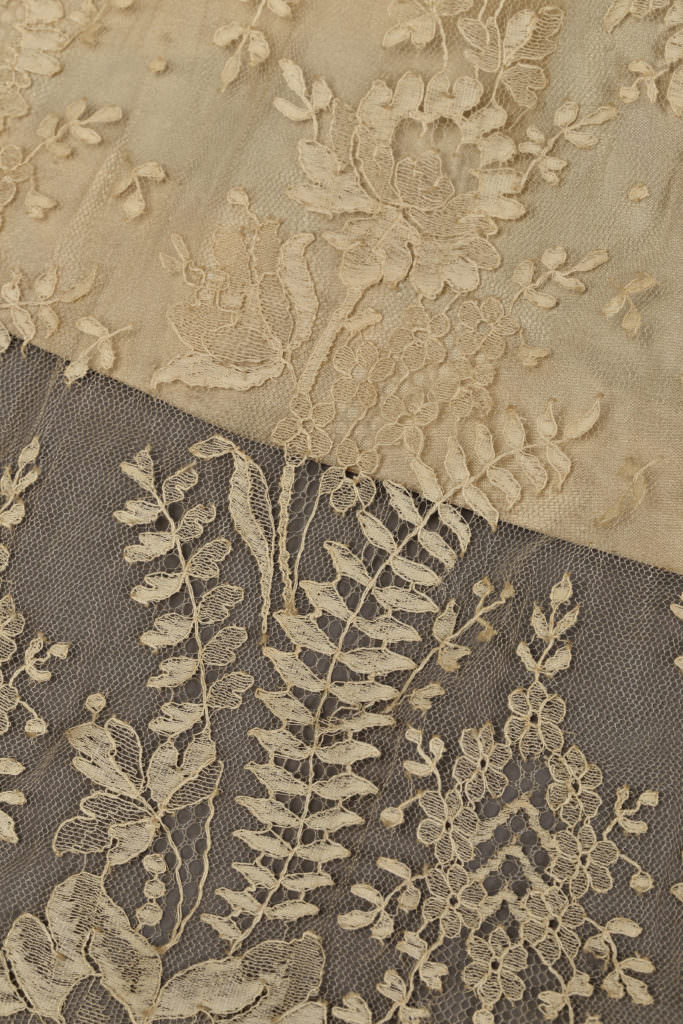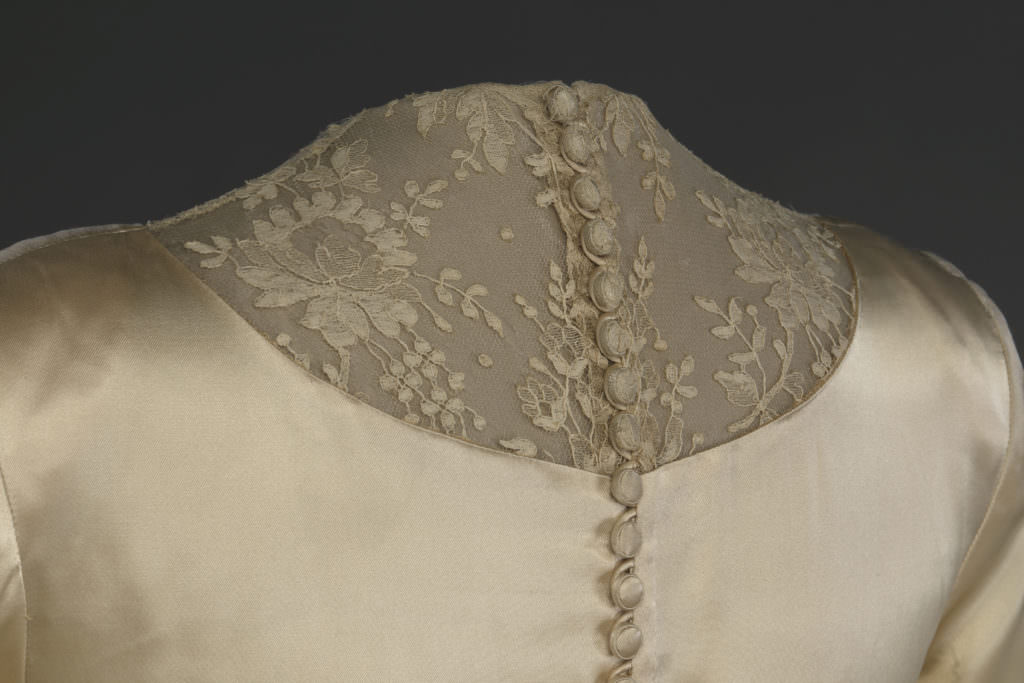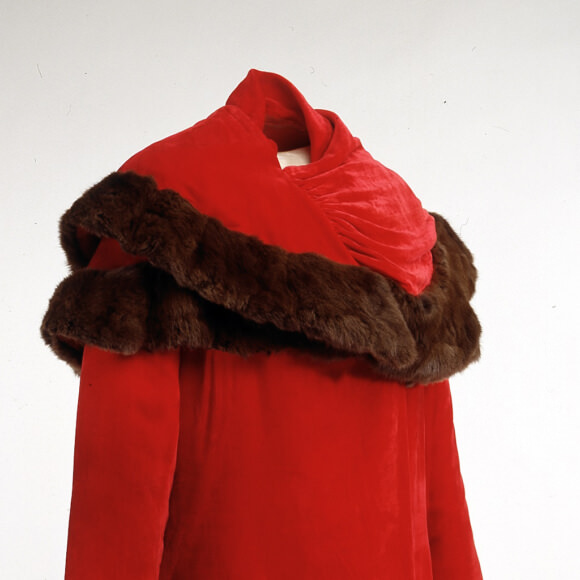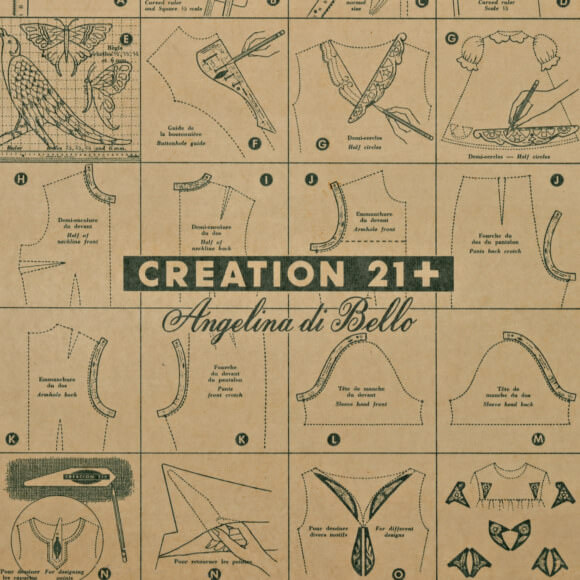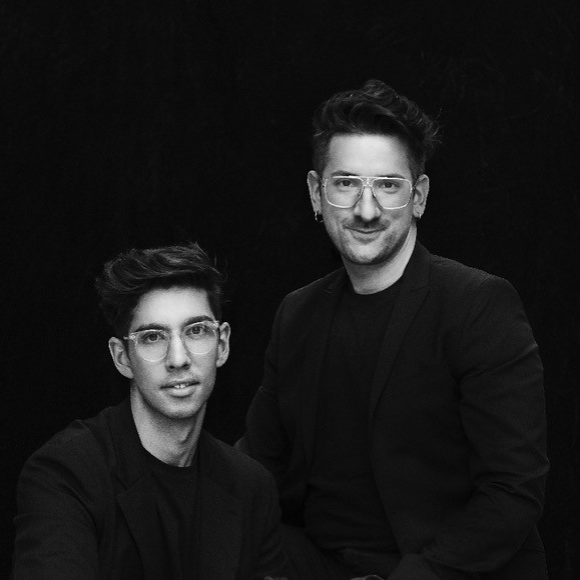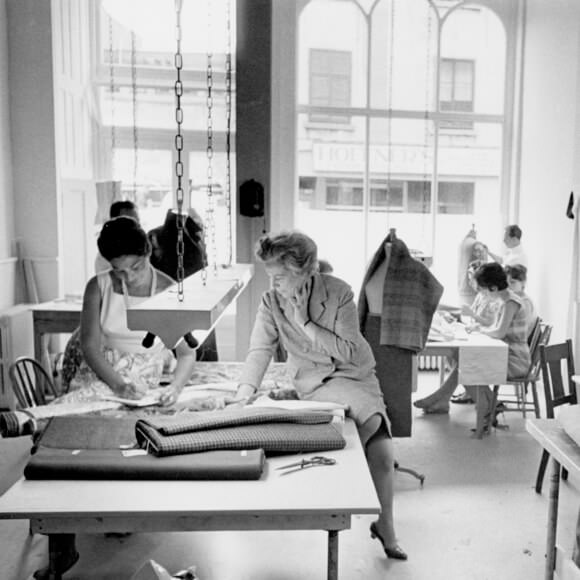
Unknown photographer, Workshop, Salon Marie-Paule Nolin, 420 Bonsecours Street, Montreal (detail), about 1965. Marie-Paule Nolin Fonds C726, McCord Museum
With experience running her own small dressmaking business, Marie-Paule Archambault opened a couture salon in Montreal in 1936, which she called Marie-Paule Haute Couture. She had previously worked as a saleswoman for the Montreal couturier Raoul-Jean Fouré. Marie-Paule had no formal training whatsoever in fashion design.
Born into a prominent Outremont family, she knew the other couturiers working in Montreal at that time, like Lucien Lacouture, Ida Desmarais and Gaby Bernier. Marie-Paule was also an avid reader of fashion magazines and closely followed French couture trends. With the idea of launching her own fashion house, she wisely hired Lacouture’s former assistant, Hernance Ferland. In addition to guiding the young designer through the ins and outs of her new world, Hernance managed to attract many of the recently deceased couturier’s former clients, including members of the prestigious Bronfman family.
To prepare for the opening of her salon, she visited numerous fashion houses in France, a practice she later made into a habit.
From the very beginning, she used only high-end fabrics, like silk by Bianchini-Férier and wool by Rodier.
In 1936, the designer’s new salon was located in an apartment in downtown Montreal at 648 Sherbrooke Street West, near University Street. With her fine furniture, it was reminiscent of small Paris fashion houses. Marie-Paule employed three seamstresses, including Ferland, but even at this early and modest stage of her career, she faced what would become a chronic problem for her: money. She tended to be extravagant and had limited business sense.
In 1938, she married Jean Nolin, with whom she had two daughters, Patricia and Marie-Claire.
In 1941, after running her own fashion house for five years, she decided to work on contract for Holt Renfrew and Co. Ltd. Her workspace there was called the Salon Marie-Paule and included a reception area, fitting rooms, a workshop and an office; her staff numbered an unprecedented 20 employees.
She was considered the “grande dame” of Montreal haute couture at this time.
Later during this period, the Salon would also make copies of original Paris haute couture models acquired by Holt Renfrew.
Always looking for new horizons, Marie-Paule left the prestigious Holt Renfrew store in 1949 and once again went to work for herself, initially out of her home on Elm Avenue in Westmount. The designer was very prolific, with an extensive clientele, and enjoyed a high profile on Montreal’s fashion scene. To firmly establish her reputation as one of Montreal’s top couturiers, she soon purchased an imposing nearby residence at 486 Wood Avenue to present her collections: at least one of her fashion shows took place in this building’s luxurious interior, furnished with antiques and decorated with European tapestries. However, the splendour of Wood Avenue was short-lived; barely a year later, Marie-Paule had to sell the house because it was illegal to operate a business in a residential area.
Determined not to give up on having a salon, in 1954 the designer opened another one at 1426 Sherbrooke Street West, and clients continued to flock to this tastefully decorated locale. Unfortunately, her chronic financial problems surfaced again and, three years later, she closed her salon and returned once more to her home on Elm Avenue. While still on Sherbrooke, Marie-Paule became President of the Association of Canadian Couturiers, succeeding the organization’s first president and founder, French-born couturier Raoul-Jean Fouré. While the majority of Fouré’s clients were French-speaking, many of Marie-Paule’s clients were Anglophone.
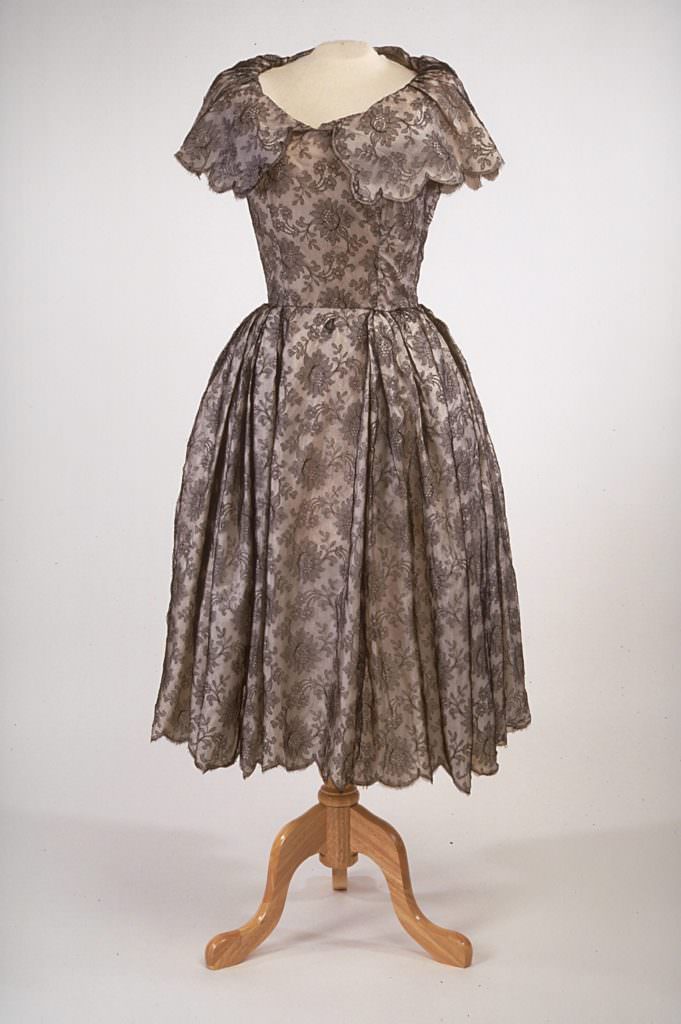
Dress, Marie-Paule, 1954. Gift of Marie-Paule Nolin, M983.28.2 © McCord Museum
During her second period working on Elm Avenue, Marie-Paule suffered the greatest setback of her career when a fire destroyed most of her house and business in December 1962.
Refusing to give up, the following year Marie-Paule came up with the idea of opening an elegant salon at 420 Bonsecours Street in Old Montreal, a sector that was starting to be revitalized. Her space included two rooms, where she presented fashion shows, as well as a workshop with a varying number of employees that reached a maximum of 16. Furnished with antiques and decorated with objets d’art, the interior was somewhat reminiscent of the Wood Avenue house. Although the salon was initially very successful and remained in operation for ten years, it finally had to close its doors due to insurmountable financial problems. However, before then, Marie-Paule did everything she could to avoid closing, even setting up a short-lived tearoom in the salon and organizing special events like concerts, lectures and meetings. She created costumes for the Montreal International Theatre (La Poudrière) on St. Helen’s Island, and even brought out a ready-to-wear collection in 1969, a project that proved disastrous because she refused to use cheaper fabrics to ensure the collection would turn a profit. When Marie-Paule finally closed her business in 1973, it was the end of an era.
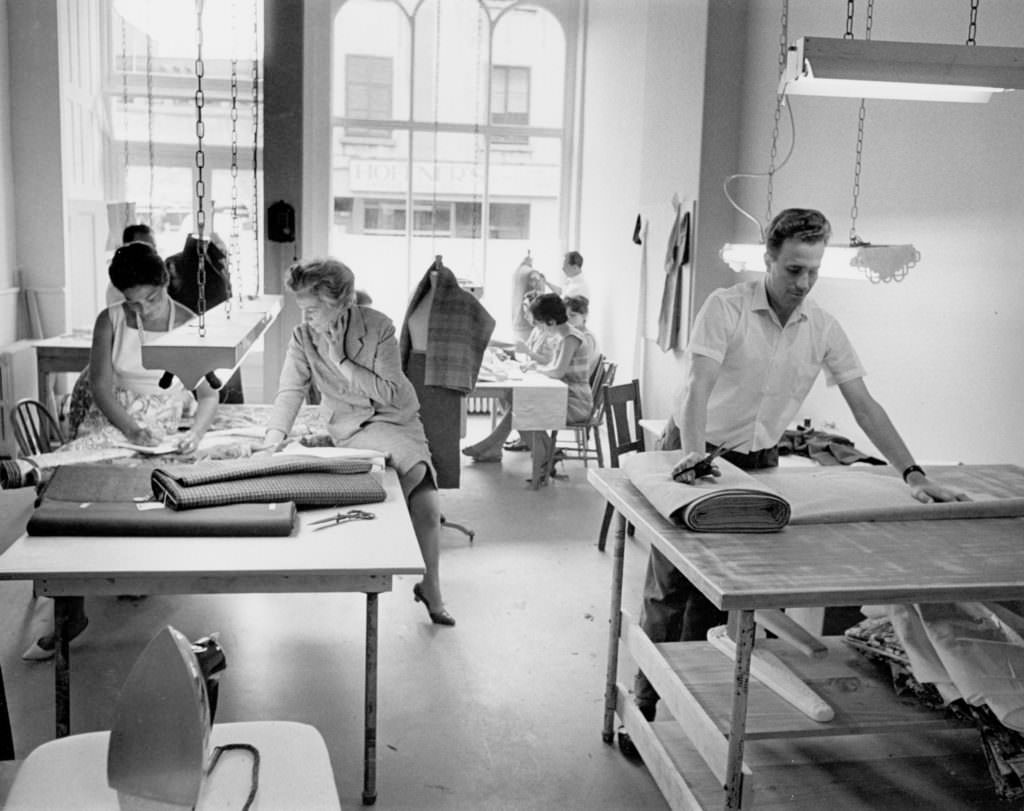
Unknown photographer, Workshop, Salon Marie-Paule Nolin, 420 Bonsecours Street, Montreal (detail), about 1965. Marie-Paule Nolin Fonds C726, McCord Museum
Marie-Paule never studied fashion design. She knew how to sew but did not have the special training and experience of the seamstresses working in ateliers. She was unable to draw patterns nor did she know draping.
Her work method was to begin by talking with her client to find out where and when the garment would be worn, and then select the most appropriate model, colour and fabric.
A roll of fabric was often placed before the client to determine whether it created a flattering effect and to try out various ideas by draping the fabric on the client. At this stage of the process, Marie-Paule, or sometimes her sister, Jacqueline Archambault, would make working drawings. Once the client and Marie-Paule had selected a suitable model, measurements were then taken, usually by her assistant. Then Marie-Paule discussed the model with the assistant who, with the help of a team of seamstresses and about three fittings with the client, would carefully transform Marie-Paule’s ideas into a unique creation. Obviously, the assistant had to be an excellent cutter. Florence Allard, Marie-Paule’s assistant at Holt Renfrew and later at 1426 Sherbrooke Street and on Elm Avenue, described herself as “Marie-Paule’s other half.”
Her choice of fabric is perhaps the most emblematic element of her work.
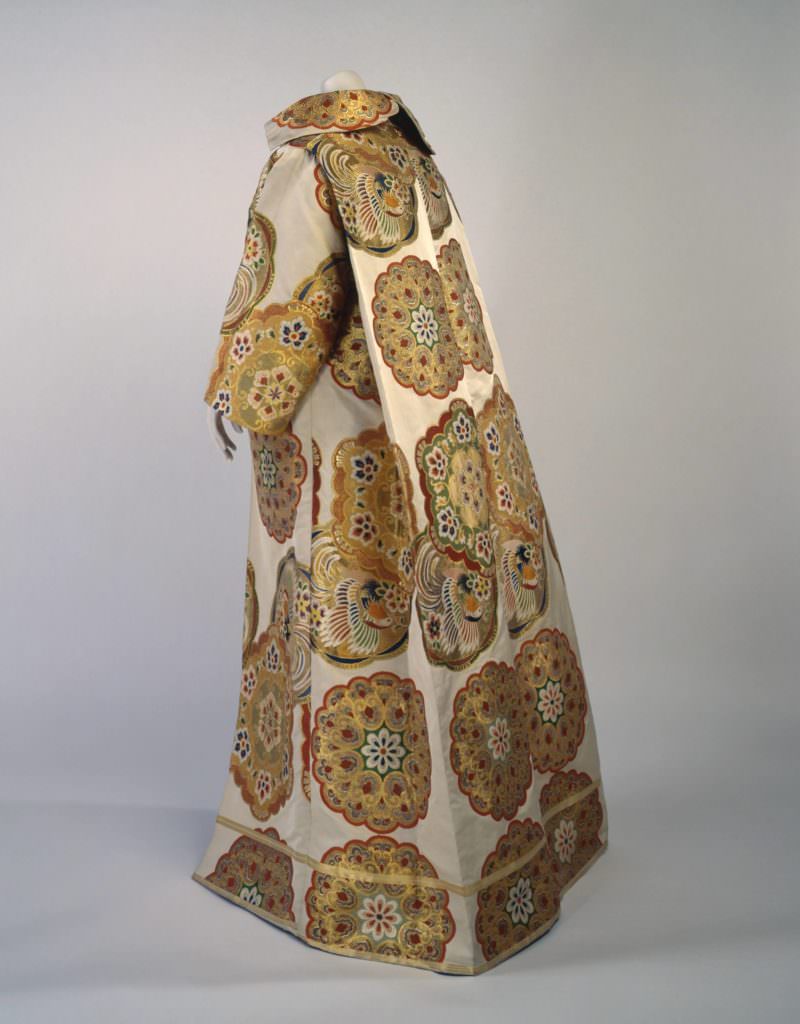
Coat, Marie-Paule, 1964-1965. Gift of Mme Pierre Desmarais, M984.173.1 © McCord Museum
Her creations were generally known for their simple elegance. The fabrics were of the best quality, but rarely elaborate. Marie-Paule could advise her clients on which types and colours of accessories went with a given outfit, and even how to wear a garment. Her focus on elegance was legendary. In the 1960s, she hosted the Radio-Canada radio show Fémina for six years, discussing topics of interest to women and the importance of dressing with elegance and good taste. In 1972, Marie-Paule produced a bold runway show entitled A Tour of Elegance that travelled across Canada.
In the 1950s and 1960s, Marie-Paule had a major influence on the fashion choices of Montreal women.
Full of style and elegance, her creations were of the highest quality and could be recognized from a distance. Their timelessness meant that their owners could wear them for many years if they wished.
Marie-Paule’s success was doubtless largely due to her innate sense of elegance, charm and good looks, along with the quality of her creations and the sumptuous decor of her salons. Many of her clients probably wanted to look like her.
Her many fashion shows, some of which were organized to support charities like La Ligue de la jeunesse féminine (the Junior League) and the Marie Enfant Hospital, contributed to her renown.
In addition, her association with famous models like Élaine Bédard, Jacqueline Gilbert and Sylvia Goltman, whose photos regularly appeared in magazines and newspaper articles, helped ensure the quality of her fashion shows.

Unknown photographer, ”Calèche” suit by Marie Paule, about 1955. Model Jacqueline Gilbert. Marie-Paule Nolin Fonds C726, McCord Museum
While Marie-Paule took much of her inspiration from major French fashion trends, she believed her creations were a clear reflection of her personal vision, adapted to her clients’ appearance and desires. She sincerely wished that Canadian women, particularly Quebecers, would follow her lead in terms of dress, as evidenced by her radio show, Fémina, and her ambitious cross-country runway show, A Tour of Elegance. She did indeed have clients across Canada—not only in Montreal, but also in Quebec City, Toronto, and even in Vancouver. Approximately 50 of her outfits are preserved in the McCord Museum.
Sources
Beaudoin-Ross, Jacqueline. “Marie-Paule Haute Couture”, Dress: The Annual Journal of the Costume Society of America, 1991, no 18, p. 14-25.
Publication date
01/10/2004
Writing
Jacqueline Beaudoin-Ross, Dicomode
Share
DownloadRecommended entries
© MCCORD STEWART MUSEUM 2025




